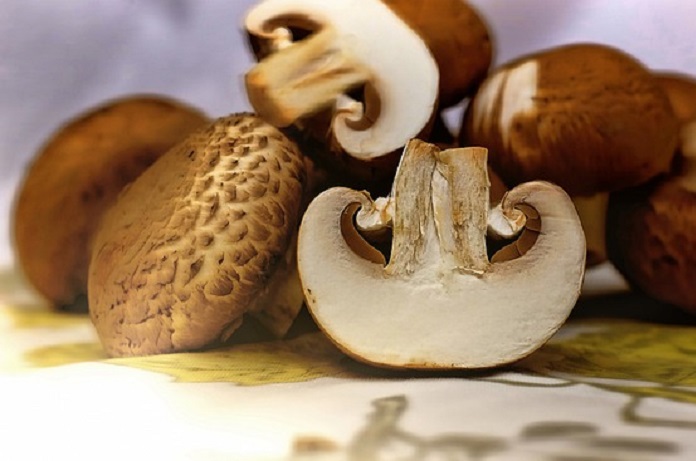A recent study in rats reports that an antioxidant present in mushrooms can relieve some symptoms of preeclampsia or pregnancy-related high blood pressure.
Pre-eclampsia is a common complication in pregnancies where the mother’s blood pressure increases above 140mm Hg/90 mm Hg after about 20 weeks of pregnancy. This condition affects about five to seven percent of all pregnant women worldwide and can be life-threatening to both mother and child. It is a leading cause of premature births and birth by cesarean section.
Guidelines for diagnosis of preeclampsia indicate that a decrease in blood platelets after pregnancy, fluid in the lungs, kidney or liver problems, or brain-related problems such as seizures or visual disturbances are all indicative of pre-eclampsia. Symptoms include headaches, stomach pain, shortness of breath, confusion, visual disturbances such as light sensitivity, blurred vision, or seeing auras and expectant mothers should not ignore these symptoms and instead discuss them with their doctors.
The reasons behind the cause and development of pre-eclampsia are not well understood. Defects in the formation and development of the placenta are thought to lead to preeclampsia. Deficiencies in blood vessel modifications that accompany pregnancy also result in reduced blood flow to the fetus, which can then cause oxidative stress. The oxidative stress, in turn, causes inflammation and abnormal narrowing of small arteries in the mother. Several studies report higher levels of markers of oxidative stress in placental tissue from pre-eclamptic pregnancies; additionally, mitochondria dysfunction is increasingly implicated as the source of the oxidative stress linked to preeclampsia.
Clinical trials on the use of antioxidants to treat pre-eclampsia have not been very successful. It is possible that the antioxidants studied thus far have not targeted the mitochondria as a source of oxidative stress leading to pre-eclampsia. Collaborative work carried out in three different institutions including University College Cork, Ireland, University of Liverpool, UK, and the Technical University, Denmark have shown potential therapeutic effects of an unusual amino acid, L-ergothioneine, in relieving some symptoms of pre-eclampsia in a rat model. The results of their study were published in the journal Hypertension.
This study showed that administration of L-ergothioneine in rat models with preeclampsia had several benefits:
- improved birth weight to levels similar to controls,
- reduced levels of compound (slFt-1) that inhibits the growth of blood vessels,
- a two to five-fold increase in the gene expression of antioxidant mitochondrial detoxifying enzymes.
Dr. Cathal McCarthy, the lead researcher noted, “Our research shows that treating rats with pre-eclampsia with the natural antioxidant L-ergothioneine reduced blood pressure, prevented fetal growth restriction and dampened production of the damaging substances released from the placenta during pre-eclampsia.” Additionally, the researchers used a novel method to show for the first time reduced blood flow to the placenta results in an increase in mitochondrial-specific oxidative stress. This result is significant as it further implicates mitochondrial dysfunction in the development of pre-eclampsia.
L-ergothioneine (ERG) is a water-soluble amino acid that is solely derived from dietary sources, which include kidney beans, black beans, and the highest levels are found in mushrooms. Dr. Douglas Kell from DTU Biosustain, University of Liverpool says, “Today, ergothioneine is either made chemically or extracted from mushrooms, but at DTU Biosustain we are developing a method to make it biologically. This should lead to its much wider availability at competitive prices.” Preclinical studies using rat models have shown that ERG was well-tolerated and did not show any adverse effects in pregnant rats. ERG thus shows promise as a naturally derived antioxidant with potential therapeutic value in treating preeclampsia, but its safety and effectiveness need to validated in human clinical trials.
Written by Bhavana Achary, Ph.D
References
- Williamson RD, McCarthy FP, Manna S, Groarke E, Kell DB, Kenny LC, McCarthy CM. L-(+)-Ergothioneine Significantly Improves the Clinical Characteristics of Preeclampsia in the Reduced Uterine Perfusion Pressure Rat Model. Hypertension. 2020 Feb;75(2):561-568.
- Prevalence of preeclampsia – Rana S, Lemoine E, Granger JP, Karumanchi SA. Preeclampsia: Pathophysiology, Challenges, and Perspectives. Circ Res. 2019 Mar 29;124(7):1094-1112
- Symptoms of preeclampsia – https://www.preeclampsia.org/health-information/faqs/
Image by Couleur from Pixabay



